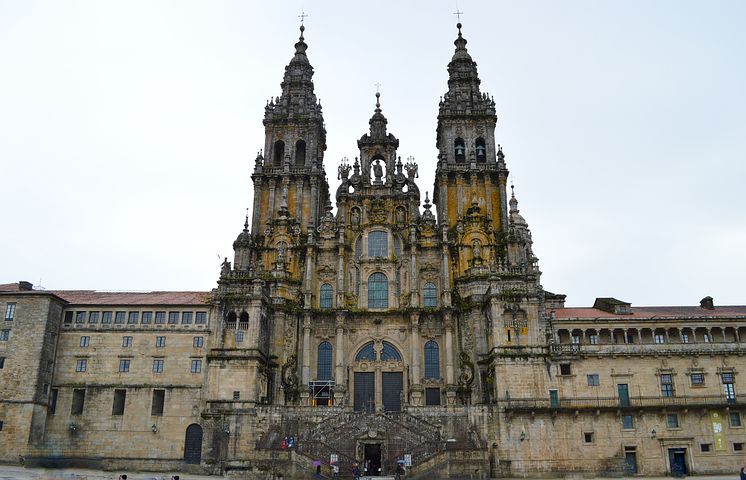
Sarria to Santiago de Compostela
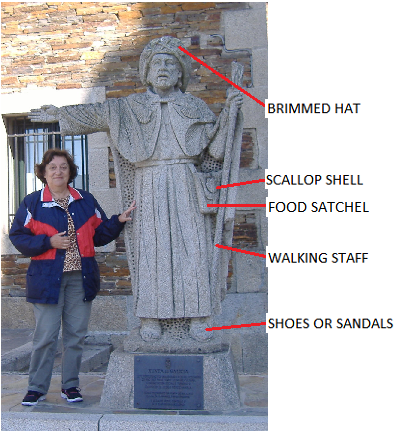
Pilgrim is a person who travels long distance to a sacred place to show religious or spiritual devotion.
Pilgrimage is the journey to the sacred place.
Distance from Sarria to Santiago de Compostela is 116 or 113 km depends on the map one is using.
This is the least distance one can walk the Camino and be awarded the Compostela, an official document written in Latin to attest successful completion of pilgrimage.
The entire route is in Galicia.
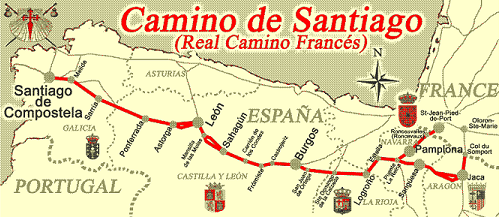

Short History of Galicia
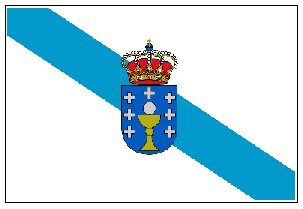
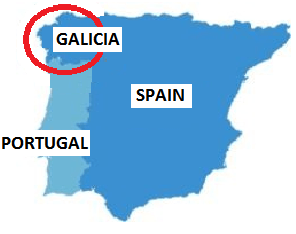
CATEVA CUVINTE DESPRE STEMA GALICIEI SI POZITIA EI GEOGRAFICA.
Galicia is an autonomous region of Spain located at the North-West of Iberic Peninsula with its own government and historic nationality
The general geographic area was inhabited from prehistoric times
The origin of population and name of the area, Galicia, comes from Gallaeci, Celtic people related with modern times populations from Wells (England), Brittany (France) and Ireland
Galicia became part of the Roman Empire in 19 BC and remains a Roman province until 3rd century AD
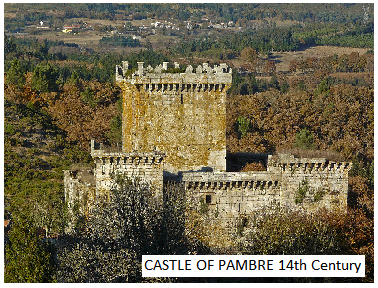
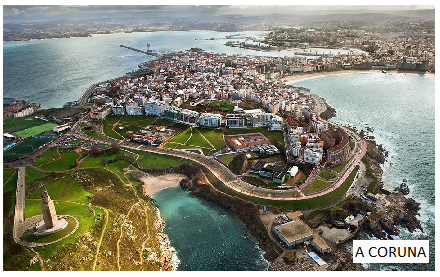
After successive dominations from Germanic migratory tribes, Islamic Caliphate and Christian Kingdom of Asturias, by 16th century Galicia was ruled by an independent assembly of representatives named Xunta of the Kingdom of Galicia. The independent government was in place until 1833 when was forcibly dissolved
Two centuries of revolutions, unrest, and military dictatorship followed
In 1981 Galicia was accorded the autonomy of self government and recognized their independent nationality.

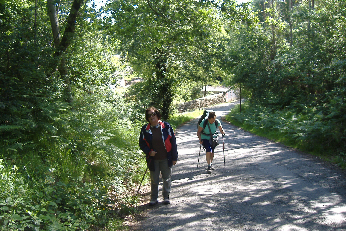
Galicia occupies an area of 11,419 sq mi, 1,030 mi of coastline, and a population of 2,718,525 in 2016. Landscape is dominated by hills (up to 5,000 ft), forests, rivers, small canyons, small beaches, inlets, towns and hamlets. Weather is mild with marine influences, no snowfalls, ever present rains (the Galician rains: fast, unexpected, cold, drenching). Main cities: Lugo, Vigo, Pontevedra, A Coruna and Santiago de Compostela (capital of Galicia). Two official languages, both Romance languages: native Galician language related with Portuguese and Spanish referred by locals as Castilian. Earliest document in Galician is from 1228.
The Galician economy is divers with good representation from agriculture and industry.
Sustainable forestry; traditional agriculture on small landholdings; dairy industry (provides 50% of total dairy per nation); fishing; tourism; manufacturing automobiles (Peugeot Citroën) and shipbuilding.
There are concerns about sustainable forestry because the native chestnut and oak are replaced by eucalyptus. Eucalyptus is a fast growing and profitable species, but depletes the soil of resources and requires a lot of water.
Education is provided by state institutions. 79% of school age children graduate high school
Short History of El Camino de Santiago
El Camino de Santiago or in English The Way of Saint James is a Christian pilgrimage documented for over 1,000 years.
The pilgrims walk the route to the resting place of Apostle Saint James (San Tiago or Saint Yago) in Santiago de Compostela.
There is testimony that years after the Crucifixion of Christ the Apostle sailed to North West of Iberic Peninsula to convert the locals to Christianity.
He was not successful in his preaching and discouraged returned to Jerusalem. In 42 or 44 AD (depend on the source) he was decapitated by Herod Agrippa.
Two of his disciples brought the Apostle remains back in Galicia following an adventurous trek.
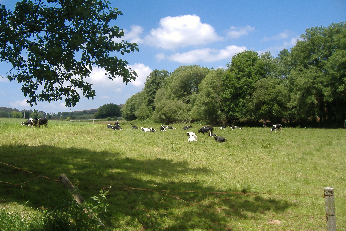
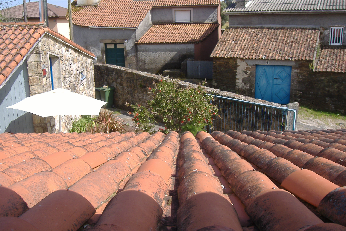
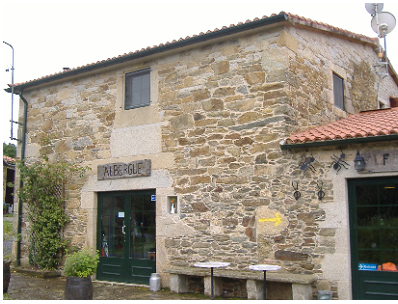

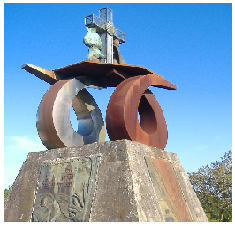
Saint James remains were re-discovered in 9th century between 813 and 838.
The hermit Paio (also under name of Pelayo or Pelagius) noticed a strong night light on the sky and falling stars from the direction of Monte Libredon, present day Santiago de Compostela and reported the event to local Bishop Teodomiro. Together they searched the area and found an old chapel and remains of three people. The Bishop declared the remains as of Apostle Saint James and his disciples.
The Bishop informed King Alfonso II of Asturias. The King visited the place and ordered construction of a chapel next to the burial place.
There are two theories to explain the name of Compostela:
- from Spanish Compo de Stella = field of stars
- from Latin componere = place of burial
Pilgrim activity started immediately with the church public confirmation of discovery of Apostle Saint James remains.
First pilgrim routes, Camino Primitivo and Camino del Norte were still undeveloped and unsafe.
The Monastery of Cluny in France and French controlled Vatican during the 11th and 12th century, facilitated the development of Camino Frances, that later became a major European route of communication between countries.
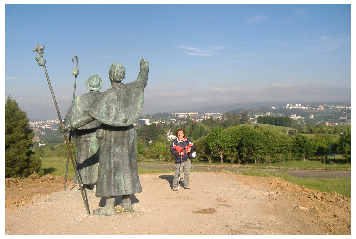

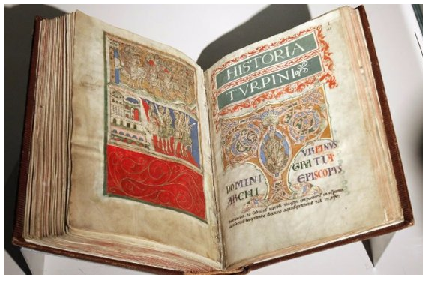
Pope Calixtus II (1119-1124) established the Holy Years (July 25 is a Sunday) and the award of Indulgences
The scholar priest Aymeric Picaud traveled the Camino Frances and created a reference work valid to our days Codex Calixtinus (1138-45). This is considered to be the first travel book. It has details about the roads, the towns, hostels/hospitals and the worship places. It divides the route in 33 stages of aprox. 23.5 km each. The entire Camino Frances should take 33 days plus 2 days for rest
The pilgrim routes during the 11th and 12th centuries were venues for sharing cultural and economic development, arts, music, poetry, advances in building and architecture, and the general progress of society at that time.
THE PILGRIMS
Starting with 14th century the pilgrim activity slows down due to adverse conditions brought by famine, wars, extreme epidemics, national revolutions, schism movements within the church.
However, the routes were never completely abandoned.
Starting with the end of 20th century, 1980’s the pilgrim activity increased especially due to observance of Holy Years. Galicia make efforts to increase tourism and promotes the events related with pilgrimage and Santiago de Compostela. The entire route of Camino Frances is organized to serve the pilgrims. The pilgrims benefit from the local hospitality and local economy improves and develops.
Number of pilgrims and nationalities:
Total pilgrims in May
2010: 28,849; 2015: 31,078; 2016: 32,786
By country of origin May 2016:
Spain: 9,383
Germany: 4,042
Italy: 2,407
U.S. : 2,374
Portugal: 1,504
France: 1,486
Pilgrim Passport
Pilgrim Passport is the Credential that a pilgrim carries on the Camino. There are required at least two stamps for each day of walking. The stamps could be from lodging, eating, worship, museums, or other historical places. First stamp should be from an official pilgrim office and the last from the pilgrim office in S de C.
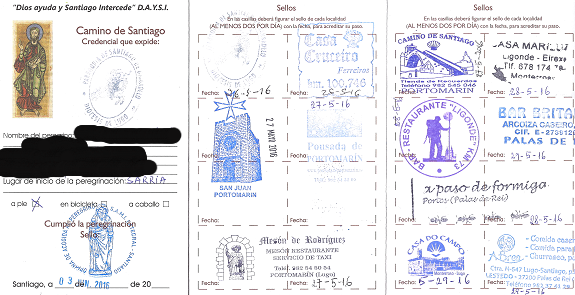
Compostela is the certificate a pilgrim receives upon completion of the walk to S de C. The Compostela is awarded if one walked at least the last 100 km to S de C on foot or 200 km on bicycle or horseback. From a religious point of view, still true today, one will get absolved of sins. The document is in Latin. This format was updated in 2014
Certificate of Distance records the date, place where the pilgrimage started, distance walked, and the day of arrival in
S de C. On top of the document is a phrase in Latin and a small decoration from Codex Calixtinus. This design was updated in 2014
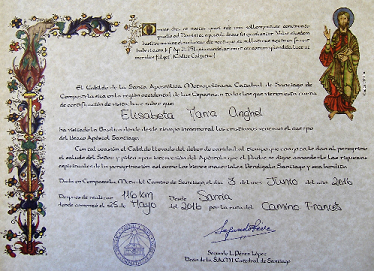
Being a Pilgrim
Inform yourself about the route to travel
Prepare your equipment carefully and learn as much as possible about the best type your money can buy
Be frugal with the amount of luggage for the trip
Be alert of your surroundings at all times
Carry water and small nutritious snacks in your backpack
Be courteous with your fellow pilgrims and the people on Camino
Try to get to your daily destination before dark
Avoid gluttony (even is hard) and excessive drinking
Buen Camino and Hola are the traditional greetings among pilgrims
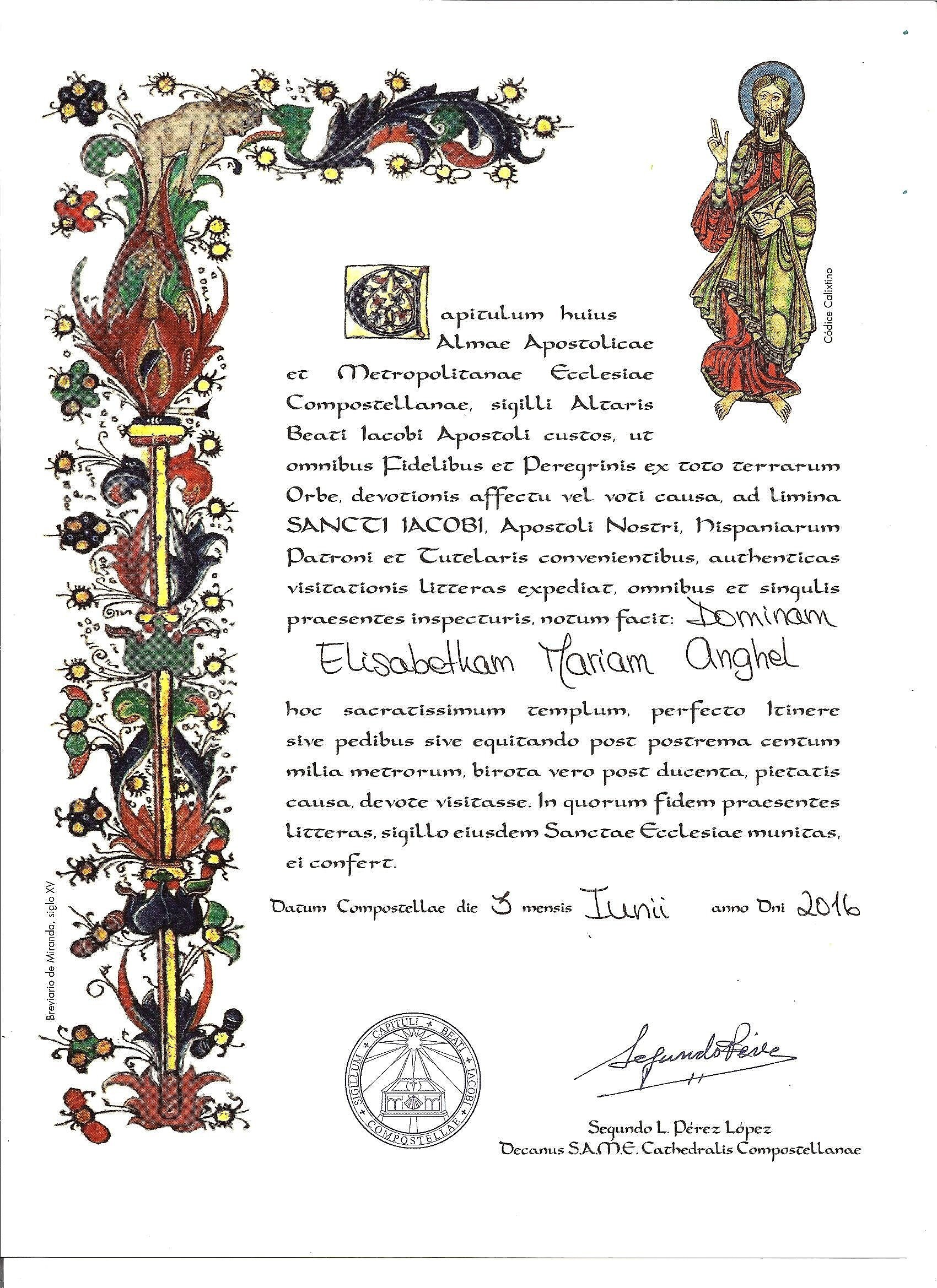
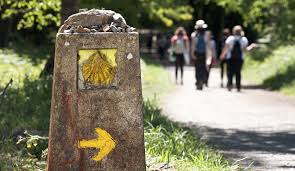
Loging on the Camino Frances
Camino Frances is the most developed route to accommodate pilgrims and encourage pilgrimage
There are four most popular types of lodging:
Hostels/albergues – dorm like accommodations with co-ed large rooms, common bathrooms, kitchen and some with laundry facilities. There are no reservations, first come first served. They are private, church or state owned and inexpensive
Inns - mostly private, similar with a 2-3 stars in U.S. Very clean, friendly personal, laundry facilities, breakfast available, reservation recommended
Casa Rural – B&B with high standards, picturesque, expensive and reservations required
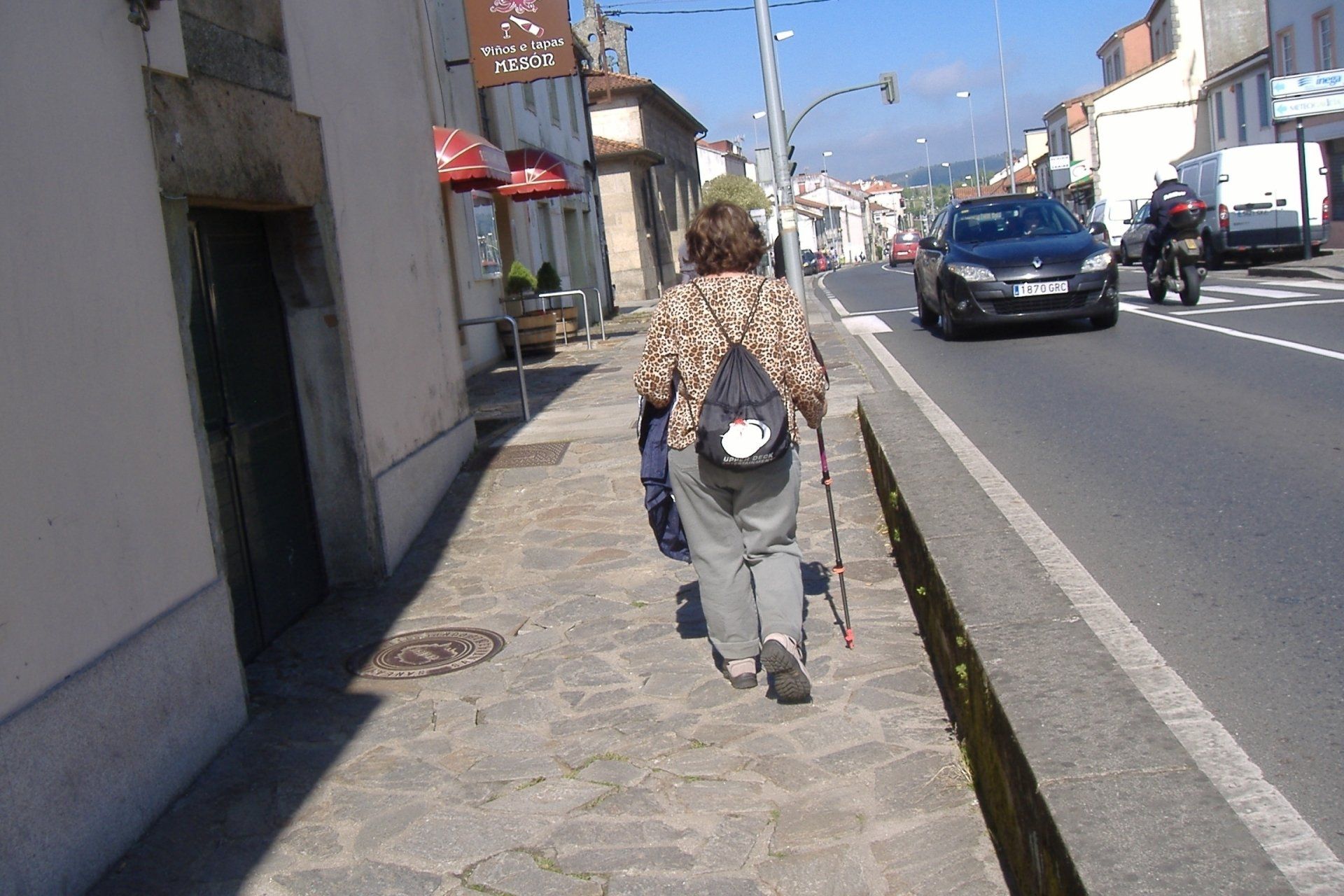

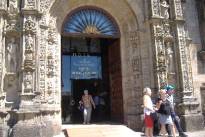
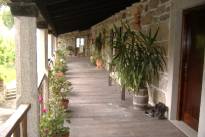
Loging in Camino Frances 2
Paradores – luxury hotels owned and administered by the state. They are historic buildings like castles, monasteries, historical structures, and some new buildings build in the local architectural style.
Restaurants on premises serve local traditional dishes.
Reservations required long before desired date.
They are the flagships of the Ministry of Tourism at national and local levels.
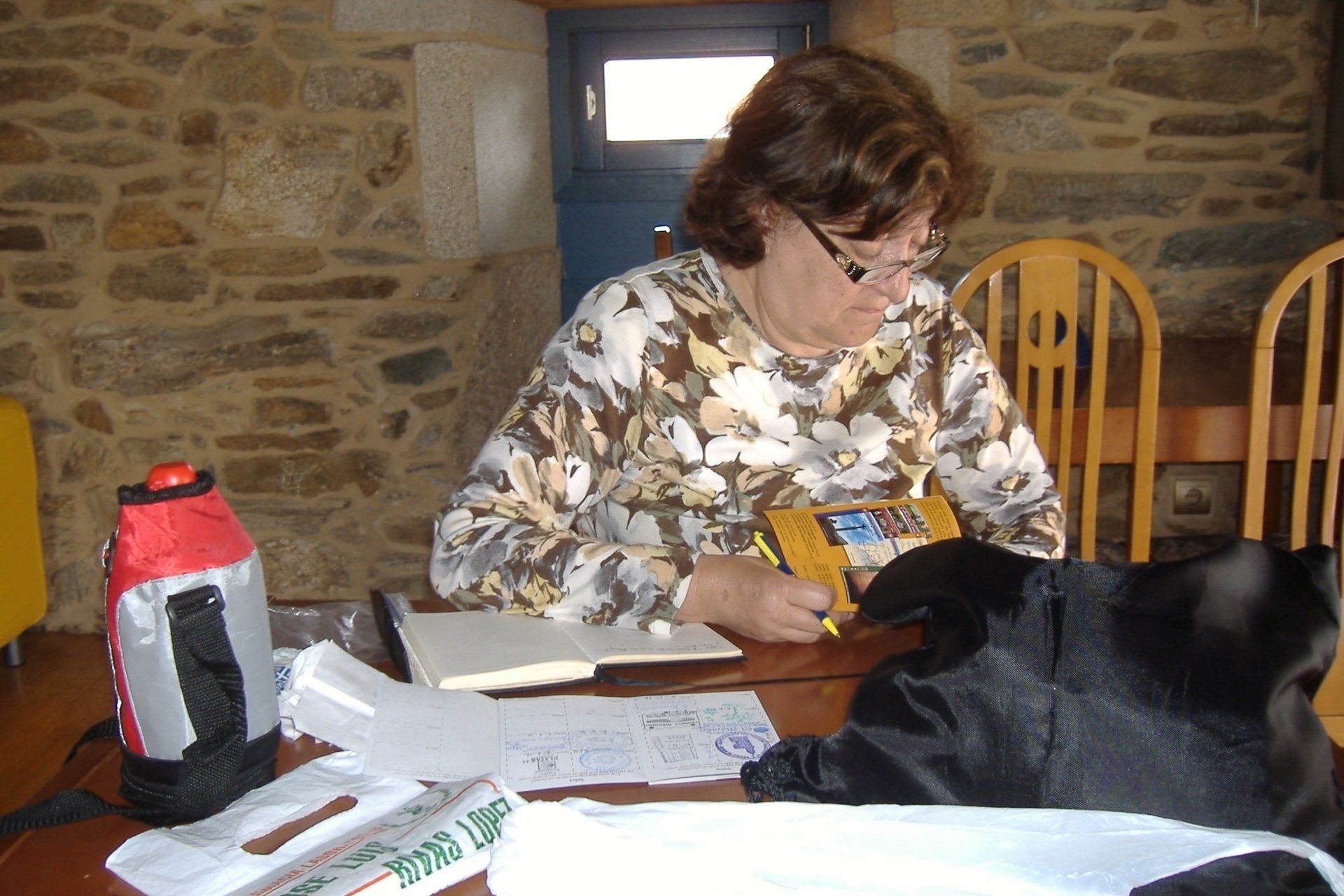

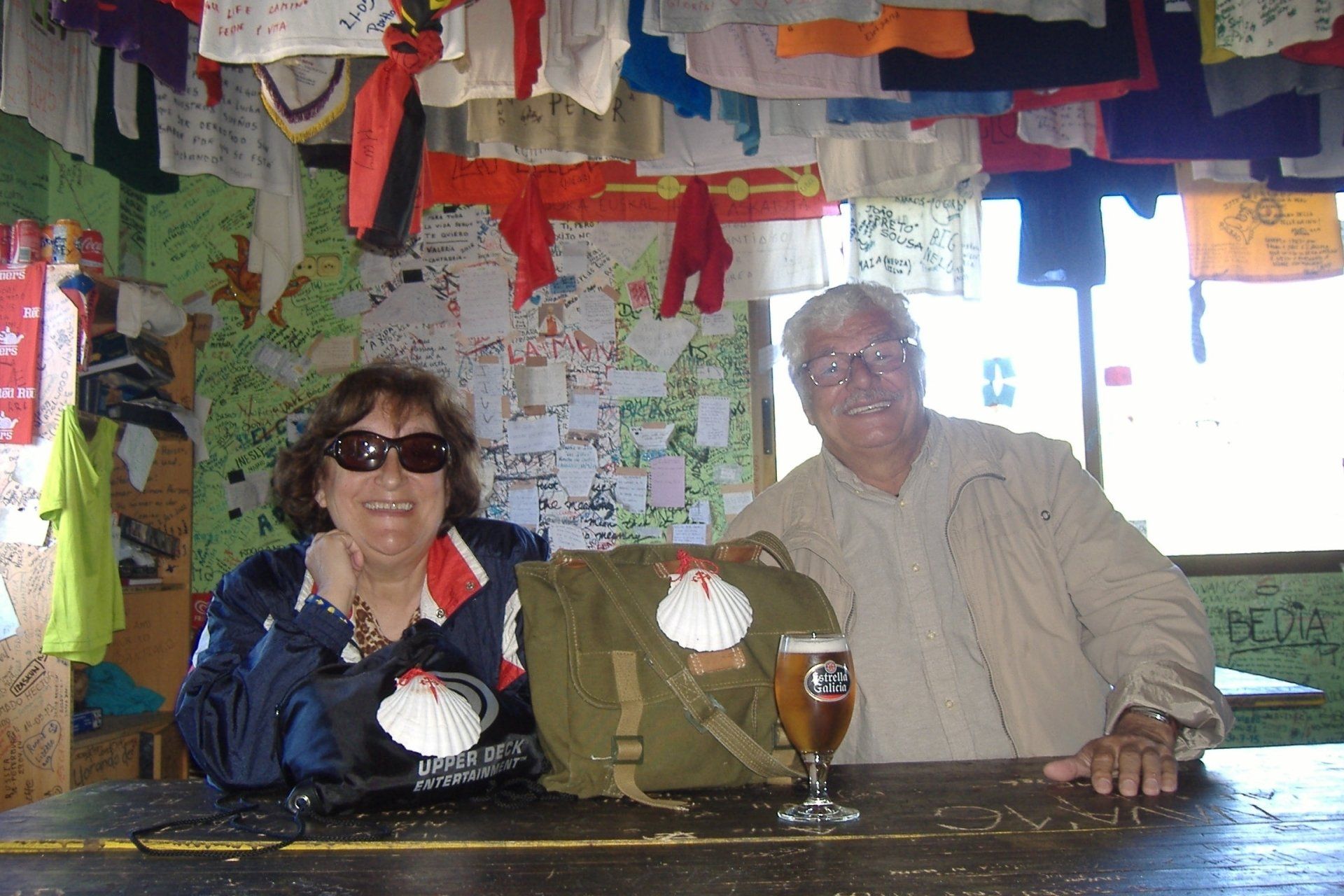
Pilgrim Etiquette
Lodging etiquette
The etiquette rules are listed visible anywhere we stayed
Remove walking shoes and deposit in designated area
Backpacks on the floor not on the beds
No eating in dormitories or rooms
No treating of blisters on the beds / in dormitories or rooms
When visiting worship places
Leave the backpacks and walking sticks outside
Men take the hats off
No short shorts and tank tops
Ask permission to take pictures of worshiping objects
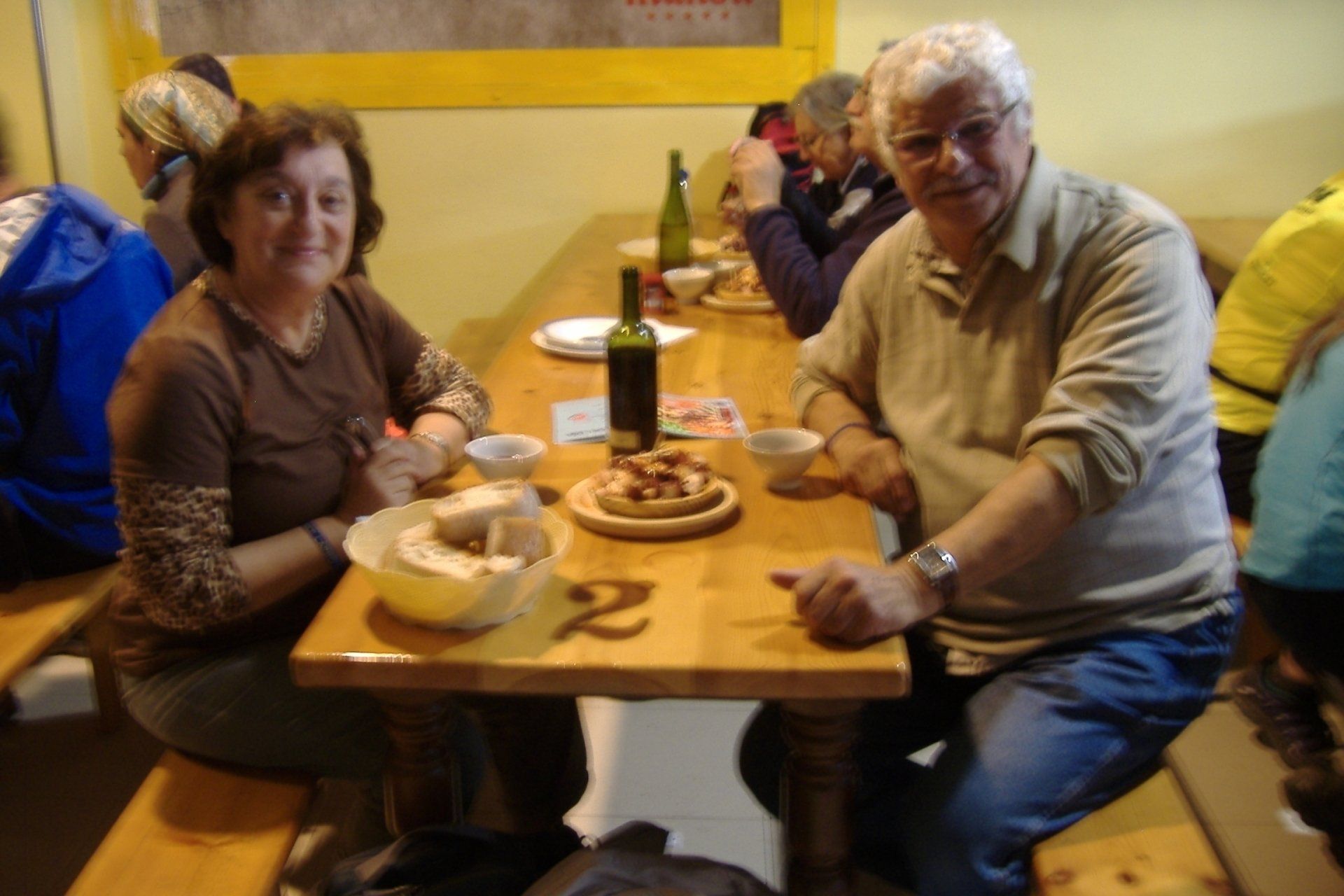
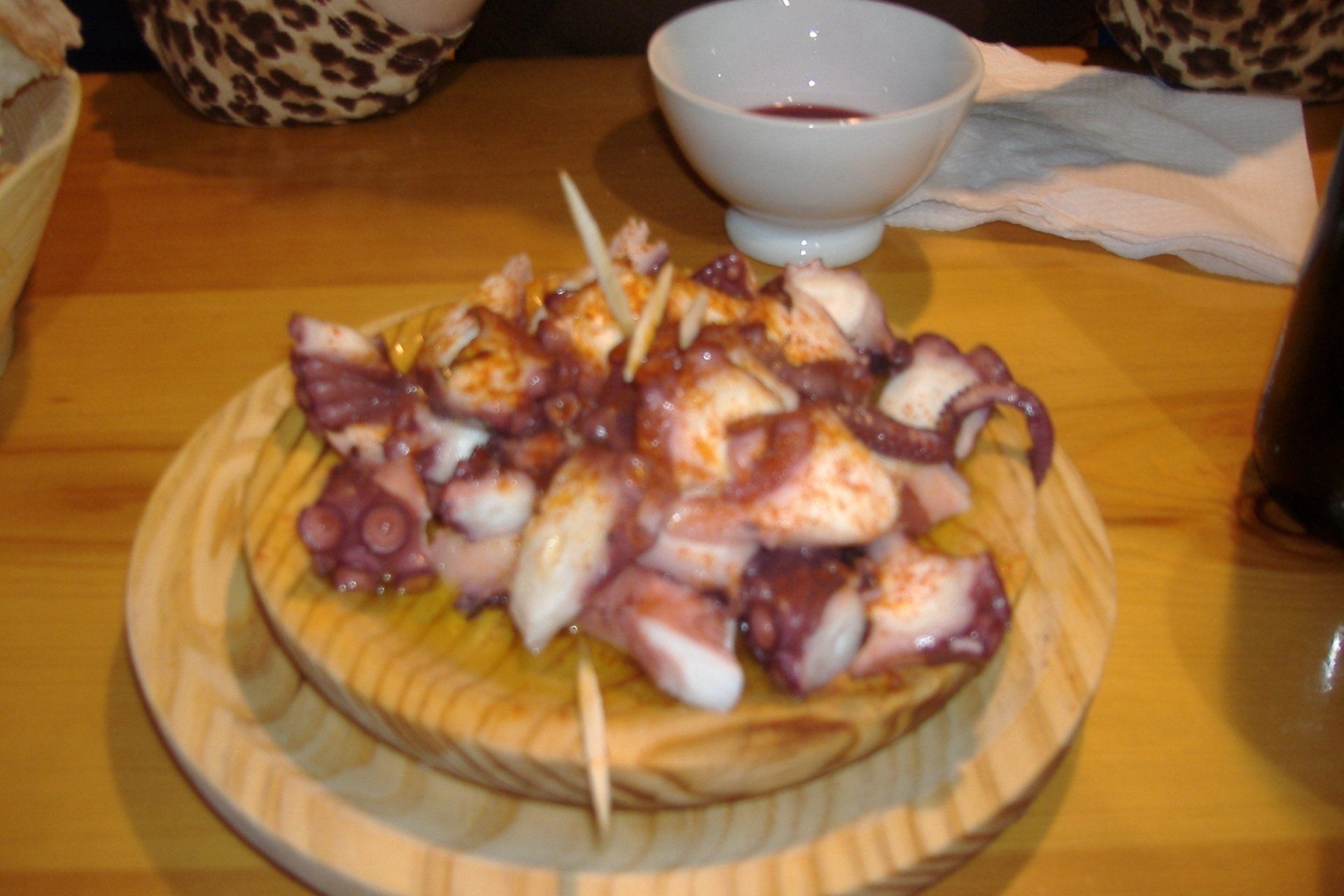
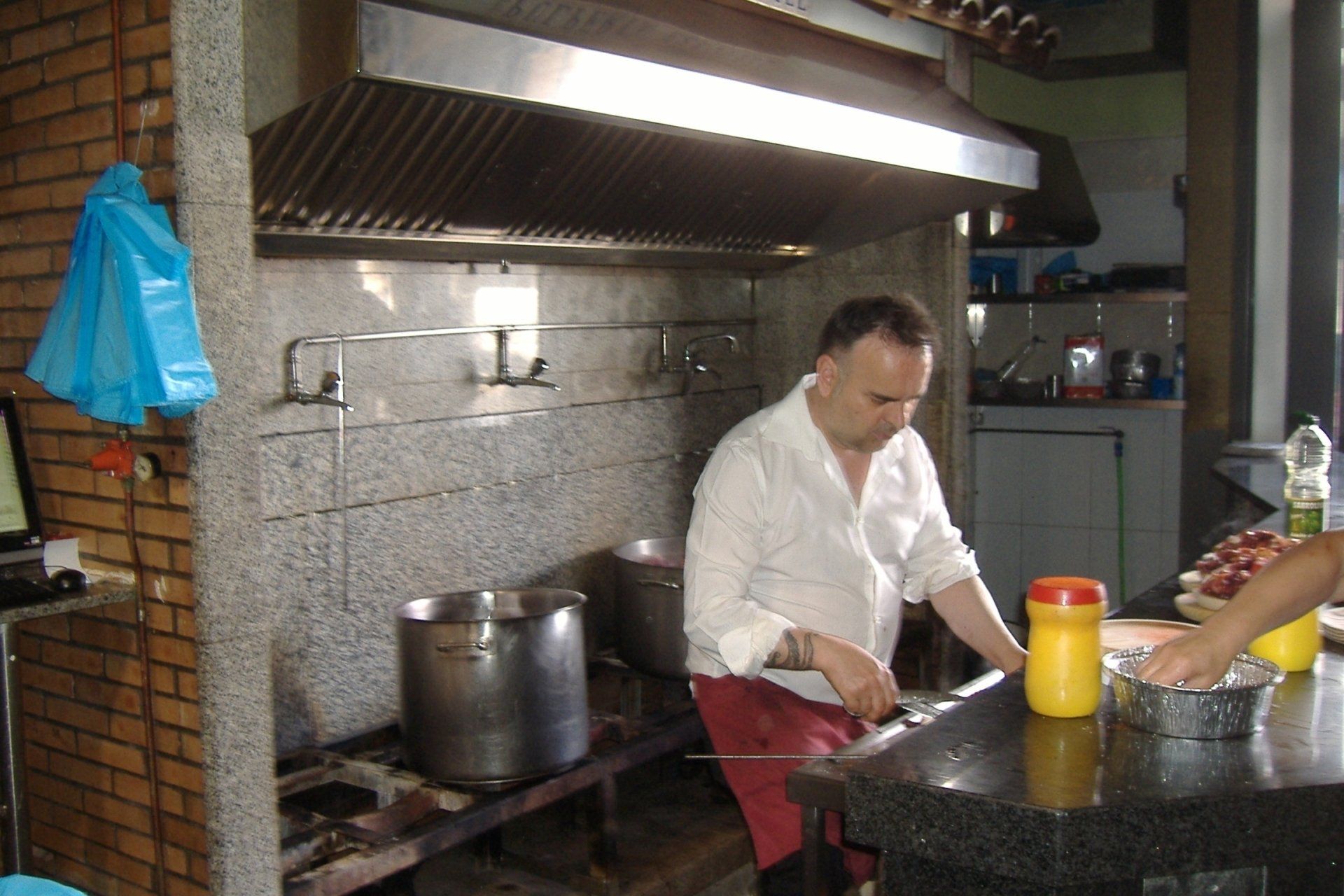
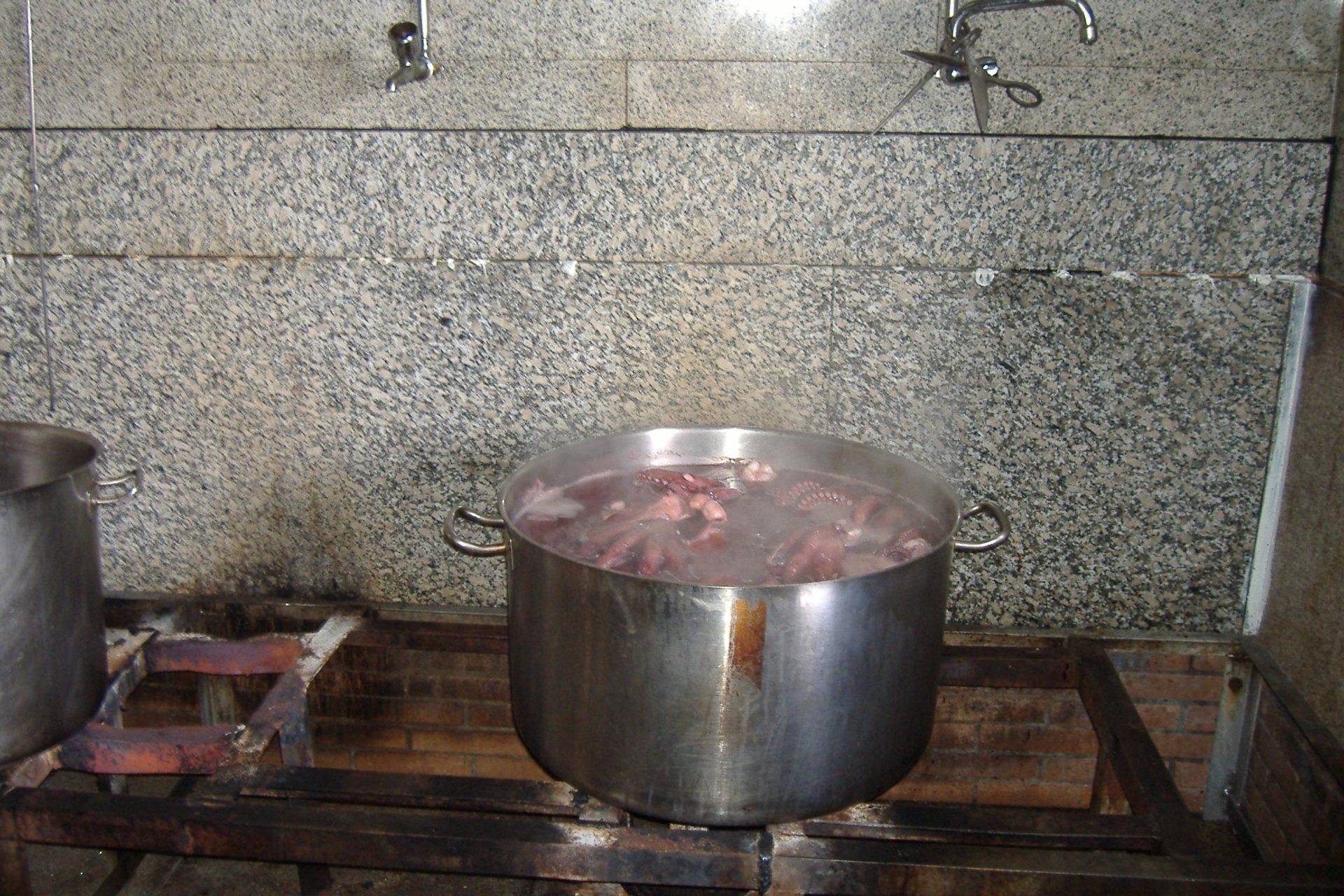
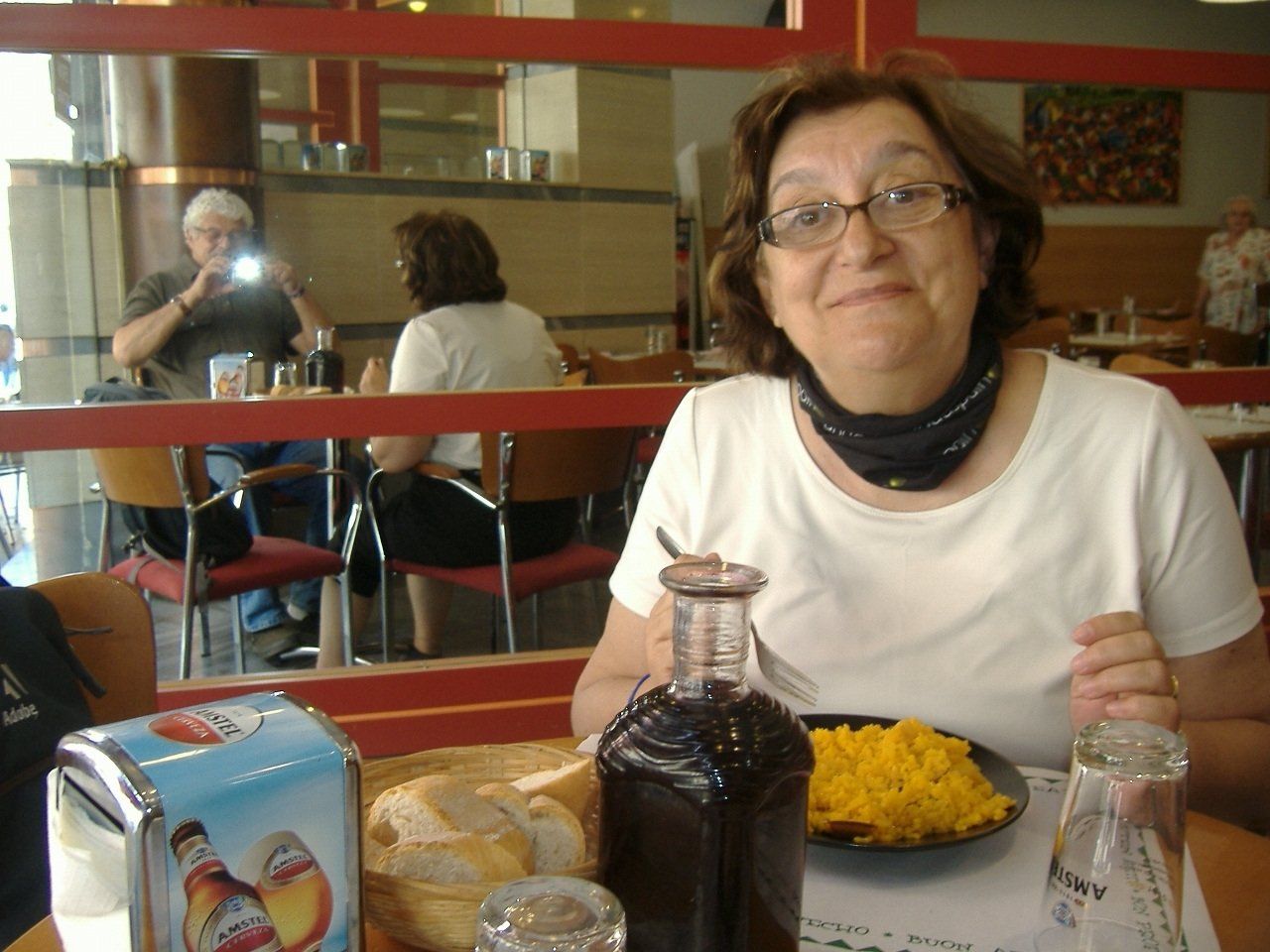
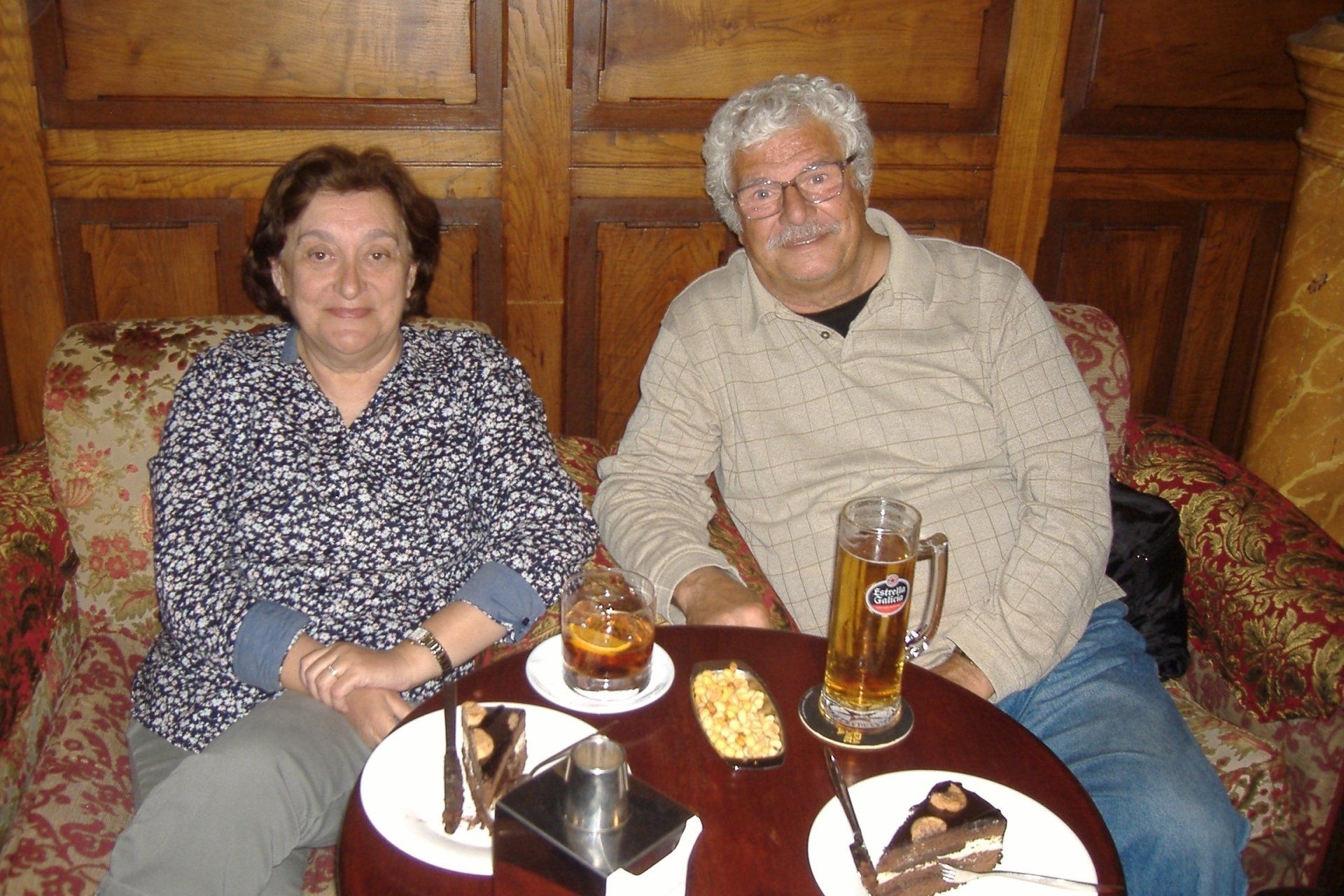
FOOD
Galicia has a wealth of specific dishes from a variety of food sources
Caldo Galego is a hearty soup made with native potatoes, cabbage or collard greens, and white beans cooked in a strong meet broth
Pulpo Galego is boiled octopus in a copper pot with water, wine, salt, paprika and olive oil. It is served usually on a wooden plate sprinkled with smoked paprika and olive oil
Empanadas (pies) filled with meet, tuna, or roasted vegetables
Tortilla de Patata or Spanish Omelets with potatoes in a shape of a large pie served in wedges
Torta de Santiago is an almond cake powdered with sugar and on top fashioned the Cross of Saint James. It is a traditional Galician dessert, but is popular in entire Spain
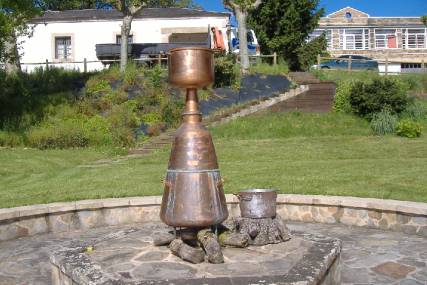
Torta de Santiago
Information about Torta de Santiago was first recorded in 1577 by Pedro de Porto Carrero when visiting the University de Santiago and the dessert was referred as Torta Real (royal cake)
In 19th century was referred as Tarta de Almendras (almond cake) in period’s cooking books
Historians argue that the recipe and place in Galician cuisine is much older, from the Middle Ages
Galician = Torta
Spanish = Tarta

Libation
Galicia had a strong wine producing tradition exporting vine cuttings in France during the 14th century
The industry collapsed in 19th century due to economic crises and depopulation of the region
Starting with 1986 when Spain joined the European Union, the industry is recovering due to financial support from EU
Amongst most popular wines are: Albarino (white, dry wine) and Ribeiro (red, fruity wine)
Galicia also has an excellent local beer produced in A Coruna called Estrella Galicia
Nourishment on the Camino
Most of the lodgings offer breakfast, some included in night’s price, some for a small amount
Breakfast consists of some or all of the following: artisan type of local breads delivered every morning warm and crusty, butter, boiled eggs, marmalade, cheese, mashed tomato salad with olive oil similar with gazpacho (yum delicious!), jamon, fresh fruits on season
Lunch and/or dinner available under the name of Menu del Peregrino or Pilgrim Menu priced very convenient, served from 12noon and/or 7pm (earlier than the traditional dinner) consists of: one starter dish (soup/salad/hearty appetizer), main dish (with meets, sea food, or vegetarian), small dessert, wine/beer/water, coffee pay extra (note: I did not have even one bad coffee the entire trip)
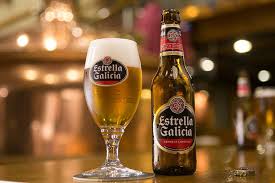
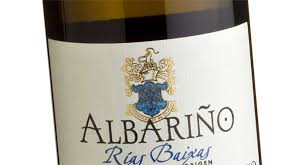
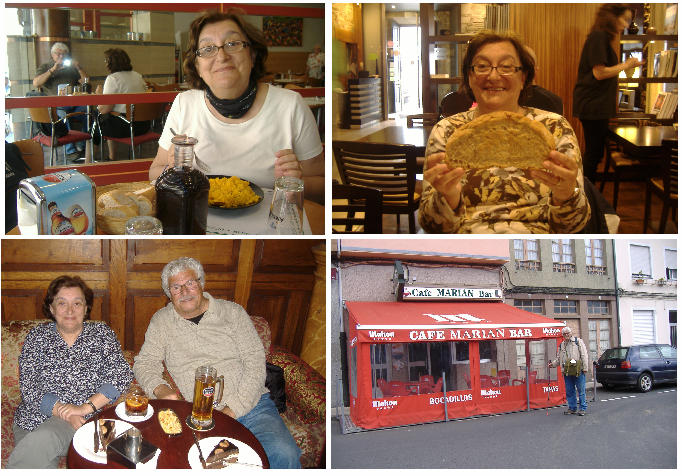
Romanesque and Gothic Architecture
Romanesque architecture was the style of choice for the monumental buildings like churches, monasteries and castles during 10th to 13th centuries. The style influence comes from France. It has very thick walls, low ceilings with equally rounded arches, few windows, not very large interiors, austere, dark and cold inside. There are very well preserved building in this style through out the Camino in Galicia, many of them serving as objects of study for history of Architecture.
Gothic style imported also from France starting with 12th century, was the innovative style at the time. The buildings were build taller, lighter, large and open arches, high ceilings, large decorative windows to allow light inside, spacious interiors, introduction of carved decorations. There are very well preserved buildings in this style as well.
Horreos
It is traditional structure seen in most of the Galician farms
It is a granary (a space to store grains from one crop to the other) build in stone and wood like a smaller and narrower house set on pillars
Each pillars ends with a flat stone and the granary itself is set on the flat stones. The construction is designed in this fashion to stop the rodents to come inside horreos and eat the grains
The storage part has a roof, and is build with small holes or grates to allow the air to circulate and maintain the crops dry. This structure is so traditional to Galicia that newer homes still build a replica for decoration on the property.
The horreos type of grain storage is also found in other parts of Spain, Portugal and Southern England. A local guide commented that same structures are seen in New Mexico
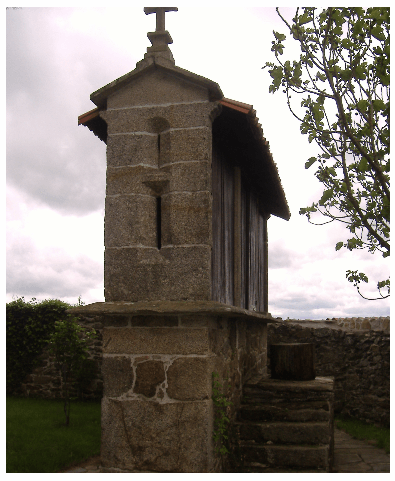
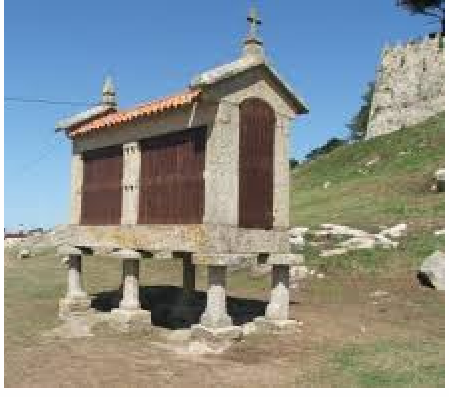
Santiago de Compostela
Cathedral
Santiago de Compostela Cathedral is the resting place of Saint James remains and the end of pilgrimage
Santiago de Compostela Cathedral was declared Spanish Property of Cultural Interest in 1896
The Cathedral and the Old Town were declared UNESCO World Heritage in 1985
Cathedral was build first as a church in 899. In 997 was demolished during religious fights between local royalties and Muslim invaders
In 1075 started the construction of present day Cathedral, finished in 1122, consecrated in 1211, modernized, enlarged and re-decorated in 16th, 17th and 18th centuries. The University of S de C was added in 1495.
Culture
Santiago de Compostela is a world class cultural center.
Annual there are music festivals, theater and opera productions in open theaters as well as in the large plazas in Old Town
Codex Calixtinus is on display in the Museum of Cathedral and University of Santiago de Compostela
During the summer month the city population raises with its visitors from 95,800 people to 2.5 mil people
There are permanent tours organized to visit the city and its historical objectives aside from the pilgrims
The University enrolls aprox. 30,000 full time students through out the year
Azabache
Azabache = Black Jet, semi-precious black stone of fossil material, wood transformed under heavy pressure through out thousands of years. It is referred also as lignite (a variety of coal)
It is mined in very few places in the world, one of them is Asturias
Early on became the stone of choice for pilgrim’s amulets and is considered to protect from the evil
Skilled artisans in Santiago de Compostela polish the stone to shiny black and create beautiful jewelry and religious objects
Azabacheria (Gate) is an area in S de C around the Cathedral where all the jewelry shops are and also the name of one of the holy entry gates/doors into the Cathedral
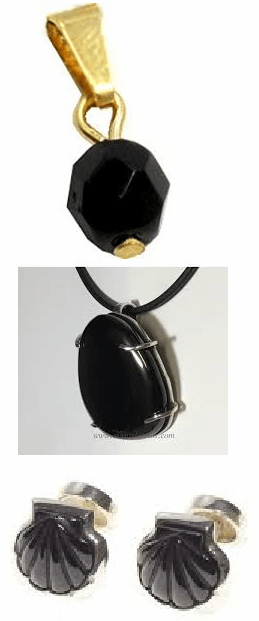
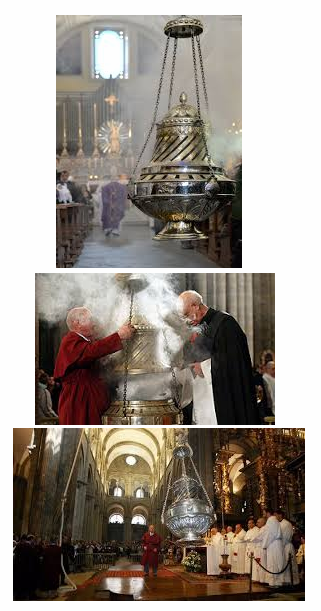
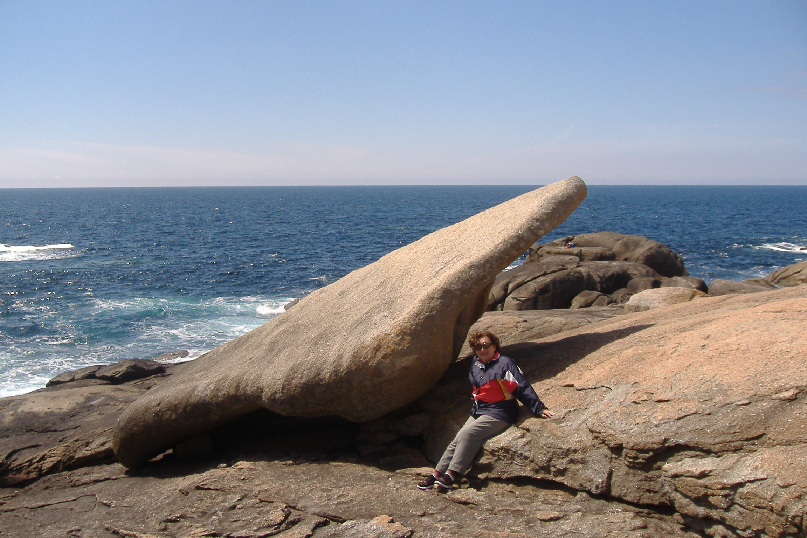
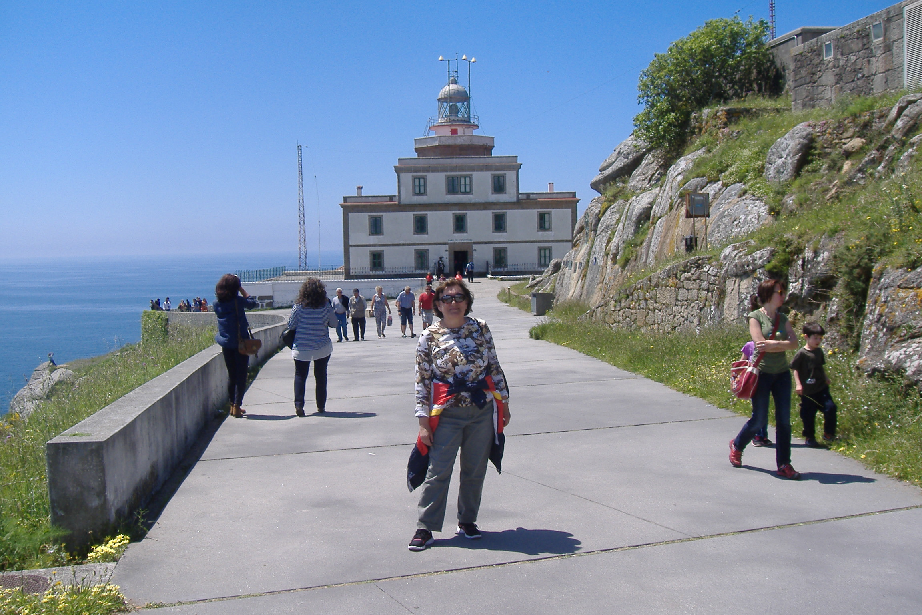
O Botafumeiro – the object and its significance
O Botafumeiro = Smoke Expeller in Galician; giant censer hanging in the Cathedral of Santiago de Compostela. It functions as a huge pendulum pulled by a team of men at the end of liturgy to spread the incense over the people in church
It was considered also for the purpose of cleansing, pilgrims arriving tired, dusty, with parasites and probably illnesses
First mention of the censer was an added note in Codex Calixtinus from about 1325. Last record of being used routinely in the service is from 1426 and since than it was used continually
The censer is 5ft tall, wheight175 lb, and is loaded with 88 lb of charcoal and incense. It functions using a pulley mechanism suspended in the dome with a trajectory of 65 m long
The current censer is made of silvered brass, dates from 1852; the rope was replaced in 1975. It fall twice in its history, with no human accidents
Buon Camino! Stay in Good Health!
Presentation and Text Elisabeth Anghel
Graphics Mark Anghel